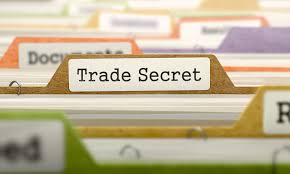In China, the primary law governing the protection of trade secrets is the “Anti-Unfair Competition Law of the PRC (“AUCL”)”. Yet just like many laws in China, judicial interpretations provide a far more detailed and enlightening description of this subject matter and guidance for court hearings. The latter is the Supreme People’s Court Interpretation Regarding Several Issues concerning the Applicable Law in Trials of Unfair Competition Civil Cases (“SPC interpretation”).
According to the AUCL, trade secrets refer to commercial information such as technical information and operational information, which is not known to the public, has commercial value and for which the rights holder has undertaken corresponding confidentiality measures to protect it. In other words, such information has to contain the following three elements to be considered a “trade secret”:
A. Information not publicly known;
B. Granting economic benefits and practical applicability to the rights holder; and
C. Confidentiality measures have been undertaken by the rights holder.

According to the Regulation of the State Administration for Industry and Commerce on Prohibiting Infringement upon Trade Secrets ( “SAIC regulation” ), these information includes design, procedures, formula of products, production processes , manufacturing techniques and management know-how, name lists of customers, information on resources, production and sales strategies as well as best-and-final offers for bids and the content of bidding documents etc.
However, according to current “SPC interpretation”, the customer list is regarded as a trade secret and generally refers to the customer’s name, address, contact information and purchase & transaction habits, intentions, content, etc. which constitute unique customer information that is different from information the general public is privy to. In particular as such information includes a customer roster, as well as particular customers with whom long-term and stable trading relationships have already been established.
The SPC interpretation further clarifies what constitutes a trade secret as per below.
I. Information not publicly known
This fact is actually implied by the identification as a “trade secret”. This criterion is met if the information is not commonly known or easily accessible to relevant people in a related field. However, information shall be considered publicly known, if it:
1) is a kind of common sense for people in related fields or the practice in the related industry;
2) only contains sizes, structures, materials,components or simple combinations of such product details, which can be easily obtained by observing the goods in question;
3) has been publicly disclosed in publications and other media, in seminars or exhibitions,
4) can be obtained through other public channels or readily available at no cost.
II. Economic benefits and practical applicability
The information is supposed to grant economic benefits and has practical applicability, if it has actual or potential commercial value, and may enable competitive advantages for the rights holder.
III. Confidentiality measures
If a party takes measures to protect information that is reasonable in view of the commercial value of the information, the confidentiality measures requirement is satisfied. A court should determine whether confidentiality measures have been taken based upon the following factors:
a) Characteristic of the media that contain the relevant information;
b) The right holder’s intention to protect the information;
c) Whether the protection measures are clearly recognizable;
d) Whether it would be easy for others to obtain the information from a public source
Examples of strategies that qualify as reasonable measures to maintain the confidentiality of information include:
1) Restriction of access to the information and only allowing access by people with the “need-to-know”;
2) Preventive measures with regards to the physical carrier of the information such as locks;
3) Marking of the information carrier as “confidential”;
4) Using a password or code to access the confidential information;
5) Signing of non-disclosure agreements;
6) Limiting visitor access to premises or facilities where confidential information is held or the requirement of visitors to maintain confidentiality;
7) Other reasonable measures to ensure the confidentiality of information.
Useful link:

